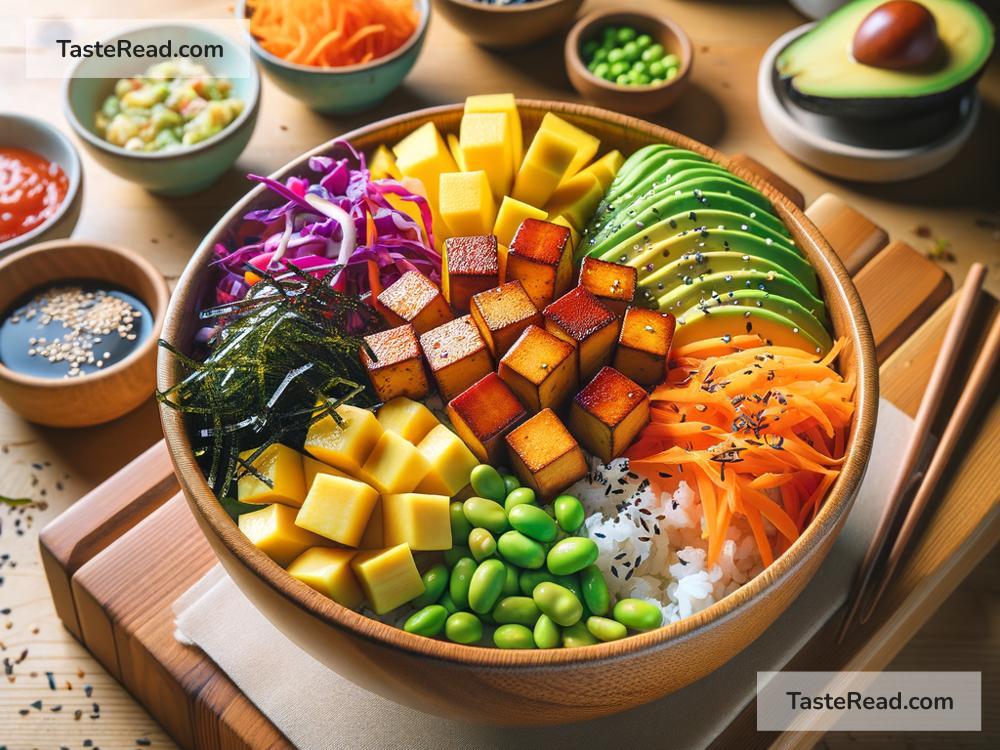Exploring the Fresh Innovations of Vegan Poke Bowl Creations
In recent years, vegan poke bowls have been making waves in the food world. Traditional poke bowls originated in Hawaii and were made with fresh, raw fish like tuna or salmon, combined with rice, vegetables, and flavorful sauces. While these bowls are delicious, many people are looking for plant-based alternatives that are just as tasty, colorful, and loaded with nutrients. Vegan poke bowls are the perfect answer! They take the heart of the original recipe and transform it into a dish that’s creative, fun, and completely cruelty-free.
What Is a Vegan Poke Bowl?
A vegan poke bowl recreates the flavors and textures of traditional poke bowls but uses plant-based ingredients instead of animal products. These bowls are all about combining fresh, nutritious ingredients to create a beautiful meal that’s full of flavor and color. Instead of fish, these bowls might feature marinated tofu, tempeh, chickpeas, or even fruits like watermelon or papaya that are transformed to mimic the look and feel of seafood. You’ll also find an array of veggies, grains, and sauces that pull the whole dish together.
Why Are Vegan Poke Bowls Becoming Popular?
There are a few reasons why the demand for vegan poke bowls is growing:
-
Health Benefits: Vegan poke bowls are packed with vitamins, minerals, and fiber. By swapping out fish for plant-based proteins and veggies, you still get a delicious meal that promotes heart health, reduces cholesterol, and supports digestion. Plus, these bowls are naturally lower in calories.
-
Eco-Friendly Choices: Many people are choosing plant-based dishes because they have a smaller environmental footprint. By cutting out seafood, vegan poke bowls help reduce overfishing, protect marine life, and lower greenhouse gas emissions.
-
Creative Flavors and Textures: Vegan poke bowls challenge the idea that plant-based dishes are boring. By using clever techniques such as marinating watermelon to taste like tuna or using crispy tofu as a protein base, chefs and home cooks are proving that plant-based meals can be exciting and incredibly satisfying.
-
Inclusivity: These bowls cater to people with dietary restrictions, from vegetarians and vegans to those who have allergies to seafood. They help ensure everyone can enjoy the fun of poke bowls without sacrificing flavor.
Fresh Ingredients That Make Vegan Poke Bowls Shine
The best part of vegan poke bowls is their versatility. Every bowl can be customized to suit different tastes, preferences, or seasonal ingredients. Here’s a look at some of the common ingredients you’ll find in these creations:
- Protein Alternatives:
- Tofu: Firm tofu works well because it absorbs marinades and has a meaty texture.
- Tempeh: This protein-packed option has a nutty flavor and crumbly texture.
-
Marinated fruits: Watermelon, papaya, or even tomatoes can be transformed with the right spices and seasonings to mimic raw fish.
-
Base Options:
- Rice: White rice, brown rice, or sushi rice are traditional favorites, but cauliflower rice is a great low-carb option.
- Quinoa: A nutrient-rich grain that adds protein and texture.
-
Mixed Greens: You can skip grains entirely and use fresh greens and lettuce for a lighter option.
-
Colorful Veggies:
- Edamame beans: A classic addition that adds protein and a pop of green.
- Cucumber: Cool and crunchy, perfect for balancing strong flavors.
- Pickled vegetables: Radish, carrots, or onions add tangy notes and great texture.
-
Avocado: Creamy avocados provide a healthy dose of fats and a lush finish to your bowl.
-
Flavorful Sauces:
- Vegan soy sauce or tamari: Add depth and saltiness.
- Spicy mayonnaise: Make an easy vegan mayo base and mix it with sriracha for some heat.
-
Sesame oil and lime: A simple dressing with a fresh, nutty taste.
-
Toppings:
- Sesame seeds: Boost the crunch and enhance the nutty flavors in your bowl.
- Seaweed or nori strips: Adds that “umami” flavor from the ocean.
- Fresh herbs: Cilantro, green onions, or parsley for brightness.
Innovative Twists on Vegan Poke Bowls
Here are some exciting ideas to try if you want to make vegan poke bowls extra special:
-
Watermelon Tuna: Marinate cubed watermelon with soy sauce, sesame oil, ginger, and rice vinegar. The watermelon becomes tender and juicy, taking on the appearance and slight flavor of raw tuna.
-
Carrot Lox Bowl: Thinly slice carrots and marinate them in a smoky mixture of spices, lemon juice, and olive oil. These mimic the taste and texture of salmon but are completely vegan.
-
Sushi-Inspired Bowl: Turn your poke bowl into a sushi experience by adding shredded nori, pickled ginger, wasabi, and vegan cream cheese.
-
Tropical Bowl: Use papaya or mango as the protein base, then mix in coconut chips and lime for a refreshing island vibe.
Cooking Vegan Poke Bowls at Home
One of the best parts of vegan poke bowls is how easy they are to make at home. Start by gathering your favorite fresh ingredients, then assemble them into layers. Begin with your base (like rice or greens), add a protein, pile on the veggies, drizzle with sauce, and finish with toppings. You can tweak everything to suit your personal taste, allergies, or what you have in your fridge.
Conclusion
Vegan poke bowls are revolutionizing the world of plant-based eating by offering meals that are fresh, fun, and full of creativity. Whether you’re a seasoned vegan, trying to reduce your seafood intake, or simply want to explore new flavors, these bowls are a fantastic option. With endless customization possibilities and health benefits, it’s no wonder they’ve become a sought-after dish around the globe. So, grab your chopsticks and dive into the exciting world of vegan poke bowls—you might just discover your new favorite meal!


